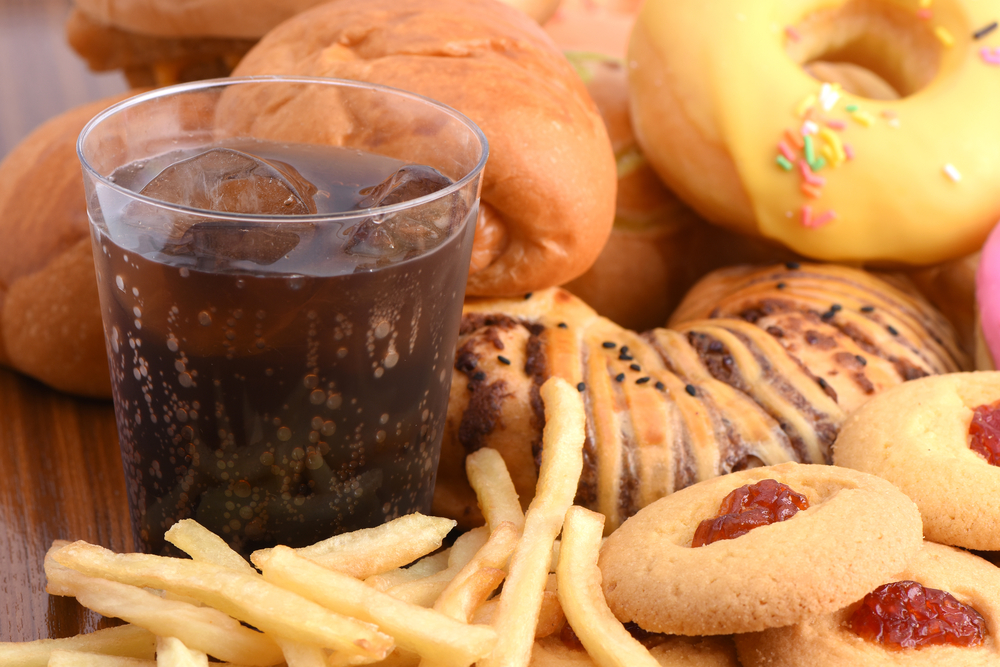In news that should surprise absolutely no one, researchers report that Americans eat a lot of highly processed foods. And in equally unsurprising news, we especially like bread, soda, fruit drinks, baked goods, salty snacks, frozen meals, pizza, and breakfast cereals. Yawn.
But here’s something that I bet you didn’t know: On average, about 58 percent of our daily energy intake — that’s more than half, for those of you too steeped in a pizza-and-Coke-induced food coma to think straight — and about 90 percent of our added sugar intake comes from these “ultra-processed” foods. How ’bout them Apple Jacks?
It’s worth taking a peak at the new findings in the journal BMJ Open, given how important this issue is to both our health and the environment.
The researchers used the 24-hour dietary recalls of 9,317 participants — a nationally representative sample that includes both children and adults — and a definition of ultra-processed foods as “formulations of several ingredients which, besides salt, sugar, oils and fats, include food substances not used in culinary preparations.” Yummy!
(These mystery “food substances” include colors, flavors, sweeteners, and other — probably unpronounceable — additives designed to either imitate non-ultra-processed foods or mask “undesirable qualities.”)
They classified things like produce, grains, meat, and milk as “unprocessed or minimally processed,” table sugar, oils, fats, salt, and other extracts as “processed culinary ingredients,” and foods like canned goods and simple breads and cheeses manufactured with relatively few additives, including salt and sugar, as plain old “processed foods.”
Ultra-processed food — the stuff that they found comprises more than half of the average American diet — has about five times as much added sugar as regular processed food. And these sugars, which include cane sugar, brown sugar, molasses, corn syrup, and honey, are literally killing us in the form of obesity, type 2 diabetes, heart disease, and a number of other chronic diseases.
So in the spirit of knowing one’s enemy, here’s a breakdown of where we’re getting most of these sugars, from the report: 17.1 percent from soft drinks, 13.9 from fruit drinks, 11.2 percent from cakes, cookies, and pies, 7.6 percent from breads, 7.3 percent from desserts, 7.1 percent from sweet snacks, 6.4 percent from cereal, and 5.9 percent from ice creams and ice pops.
Now, if all of this is just bumming you out and making you want to curl up on the couch with a glass of Sunny D, some Skippy on white bread, and a sleeve of Chips Ahoy (original, not chewy), then just know that you’re not alone. This is a national problem — and one that disproportionately affects those of us who can’t afford the best that the Whole Foods produce aisle has to offer. It’s been thrust upon us by the food industry, and we have to keep talking about it until we change the status quo.
So step away from the Lucky Charms and grab a damn carrot. We can do this.



